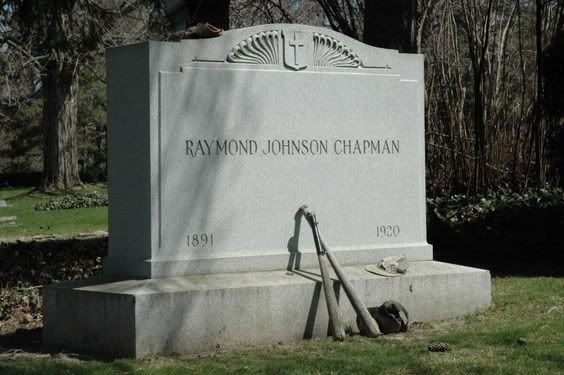When most people think of organized team sports anymore, they can't help but think of millionaire players and greedy owners and drug scandals and overpriced everything – from the cost of seats to $40 t-shirts (we won’t even mention $5 hot dogs and $10 beers). But the games were not always this way – and especially baseball
Baseball is by far my favorite sport, because when you take the time to learn and watch it, baseball is actually a gigantic game of chess. Chess played by large men who spit and scratch too much, of course, but chess nonetheless . There is a kind of poetry to all the subtle maneuvers constantly taking place throughout the field – all amidst a deceiving leisurely-ness without the disruption of a clock - that appeals to my soul more than any game with more apparent ‘action’.
Because of this, I’ve spent a fair amount of time learning about the game and its history – reading of the men who played it for the joy of the sport rather than the lavish lifestyle and out-sized paychecks. One of those men was Raymond Chapman, a talented and very popular man who played shortstop for the Cleveland Indians from 1912 to 1920.
'Chappie' had it all – he was a natural leader with an even more natural smile, excellent athletic ability, nearing the peak of his career with an exciting and talented team, a beautiful new bride at home - and his first child on the way. And then one day in August of 1920 he dug into the batter’s box in New York and faced a pitcher named Carl Mays.
This was before the days of batting helmets and body armor - and pitchers, especially Mays, were not shy about throwing inside. Chapman squared to bunt and Mays threw a pitch that sailed directly toward his head - hitting him squarely in the left temple…….
Ray Chapman died the following day – the only Major Leaguer ever killed by a pitched ball.
The team, the city, and fans of baseball everywhere were in mourning for the loss of this popular young player. Mays was vilified and left baseball soon thereafter despite lack of any evidence that the pitch was intentional. School children throughout Cleveland collected pennies and nickels – and donated them so that Chappie would have a fitting headstone on his grave – the stone pictured at the top of this entry. The Indians faltered, but re-grouped near the end of the season and celebrated Ray Chapman’s life in the best way they knew how – they captured the World Series title that same fall, dedicating it to his memory.
For more years than I can count, on or about Opening Day of each baseball season - as winter recedes and life blooms anew - I make my way to this gravesite. Like many others, I leave a small talisman behind as a tribute to the past and a prayer for the future. Some years the sky is grey and threatening. Some years its blue and crystal clear. But with baseball, as in life, this time of year always brings hope and renewal – and I like to imagine that somewhere, on a sunny field of emerald turf and carefully-groomed soil, a youthful Ray Chapman still slickly fields ground balls, his smile wide and his laughter clear in the cool, crisp air of eternal Spring.


.jpg)


